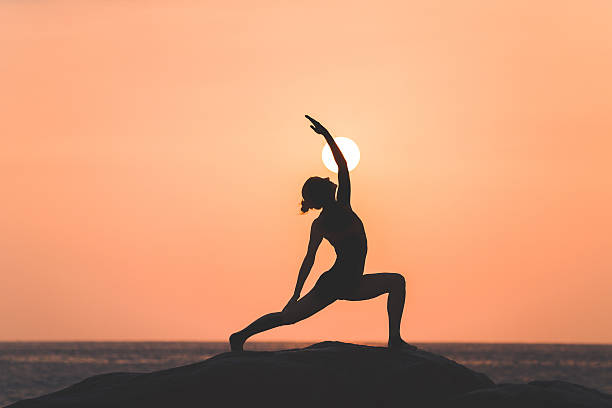Ever since this “quarantine” started (I keep calling it quarantine despite the fact that A. I’ve been working this entire time and B. we’ve all been generally back to average lately), I’ve actually been hitting it pretty hard on the workout routine lately. I do some sort of physical activity every day of the week and some days I even do two work outs depending on how much energy I have to spare by the end of the night. I used to be a really big fan of rest days, but lately, that just hasn’t seemed as important to me. Instead, I’ve been making use of active rest days, where I usually do yoga as a way to stretch my body.
So that sheds the questions: what is active rest, how does it work, and is it useful? Today, we’re going to look into if you should be making sure to add active rest days into your schedule.
What is active recovery

Recovery days usually mean resting the body after an intense workout load. Some people choose to do nothing on those days, others decide to use an active recovery workout. An active recovery workout is a low-intensity exercise that allows the body to keep the blood flowing and help muscles recover and rebuild.
Yoga, tai chi, easy bike rides, walks, or easy hikes all count as great active recovery activities. Depending on the amount you lift, weight lifting can also often be considered an active recovery activity (so long as it isn’t a muscle hypertrophy with heavy weights and repetition).
The main difference between active recovery and a full blown workout is that at the end of an active recovery period, you should feel refreshed, energized, and ready to get back to your regular workout routine the next time you train.
What are some benefits of active recovery?
Active recovery is more beneficial than just sitting around and watching Netflix on your day off. In fact, active recovery workouts are said to help reduce lactic acid buildup by keeping the muscles moving, eliminate toxins, increase muscle flexibility, reduce soreness from intense workouts, and increase blood flow.
Certain activities such as stretching and yoga can even increase your overall flexibility, helping you to perform other tasks, such as running, better. Plus you can easily target problem areas, such as leg, hip, or back pain, giving you a little extra benefit from your workout.
When should I use active recovery?
There are many different types of active recovery and each has a time and a place.

As a rest day. The day after an intense bout of exercise (say running 13 or more miles) your body may be sore and you may be feeling physically drained. This would be a great day for stretching or a long walk as active recovery. This would be similar if you did an intense HIIT workout the day before that left you feeling sluggish.
Between intervals. Research also suggests that active recovery between exercise intervals improves performance on the next interval compared to passive recovery where you just stand and wait for the next interval to being. This is due to the removal of lactate from the body which hinders performance when you begin again. Remember when I reviewed the Body Boss guide and said that between intervals I felt it was more beneficial to do some form of dance cardio routine? This would be the perfect example of using a form of active recovery between intervals, especially because I chose low intensity videos to do.
After a workout. At the end of a workout, active recovery is very important. I ran a 5k once and at the end was in a ton of pain. A very nice gentleman who was running besides me pulled me aside and reminded me that it was very important I take a walk instead of sitting down even though I was tired. I felt a ton better after getting that walk in and it was the perfect reminder that I needed the cool down. Why? Active recovery after a workout lowers the intensity of the body, reduces the acidity and levels of lactate in the body, and helps stretch out the muscles while increasing blood flow and dropping blood pressure. Essentially, it helps the body return to normal.
Do you utilize active recovery? What is your favorite thing to do? Let me know in the comments below. Personally, as you know, I like to do yoga once a week. I love getting to stretch out my muscles and prepare myself for a weekend of a lot of running.
How’s your workout routine going? I hope that this new normal is keeping you busy and active!
Until next time,
Kat
Further reading:
Minnin, G. (2019). What you need to know about active recovery exercise. Healthline. Retrieved from: https://www.healthline.com/health/active-recovery
The benefits of Active Recovery After Exercise. 2019. Cathe. Retrieved from: https://cathe.com/the-benefits-of-active-recovery-after-exercise/